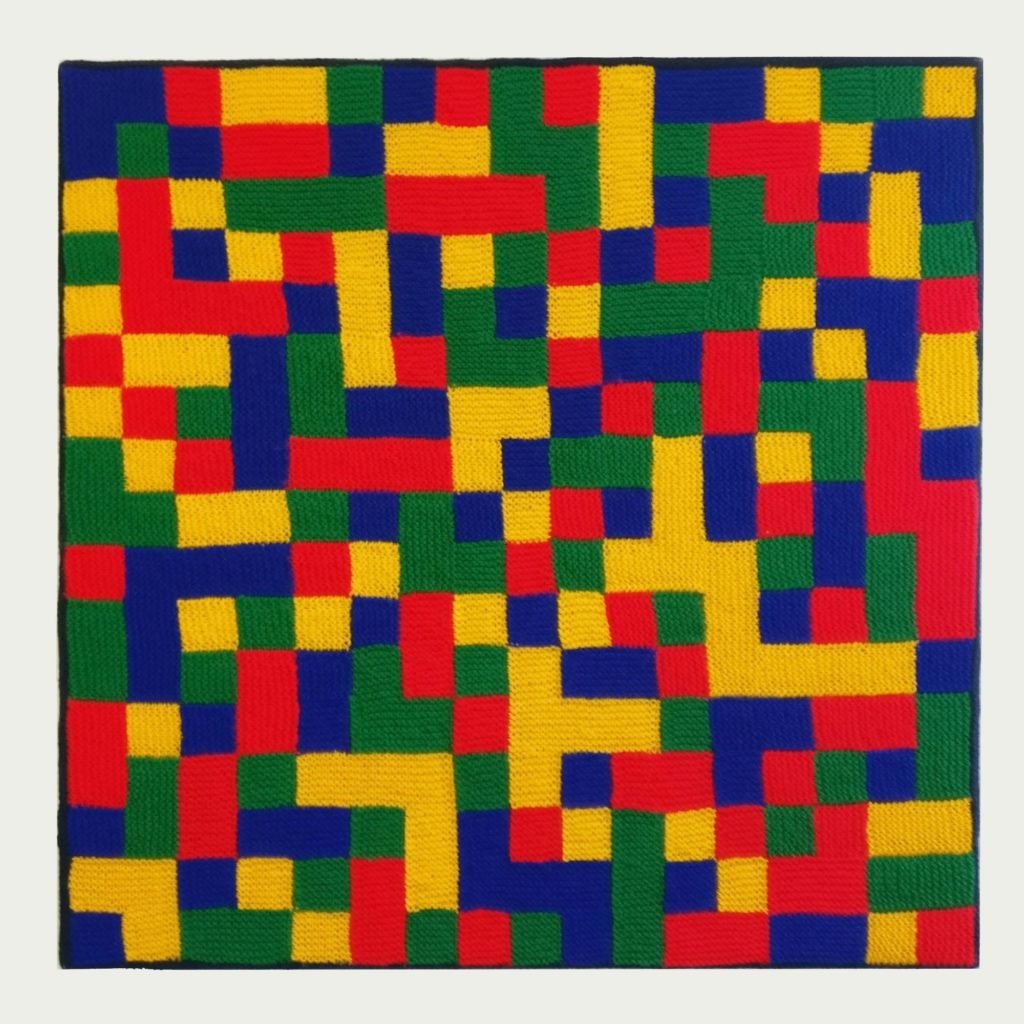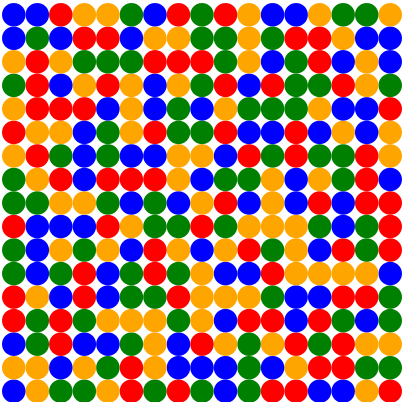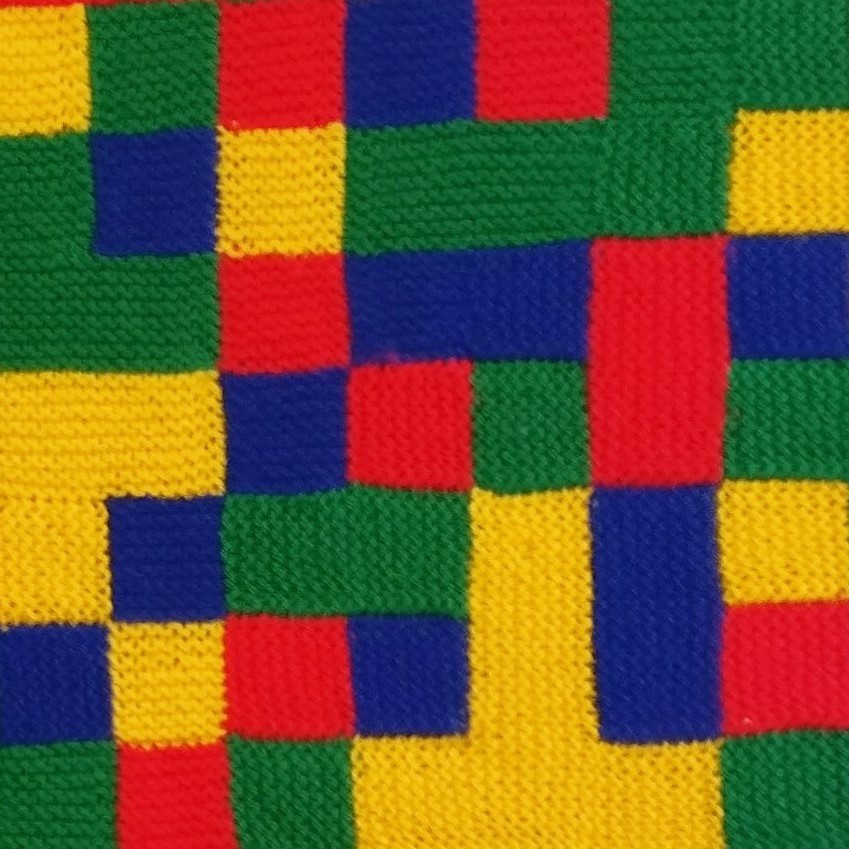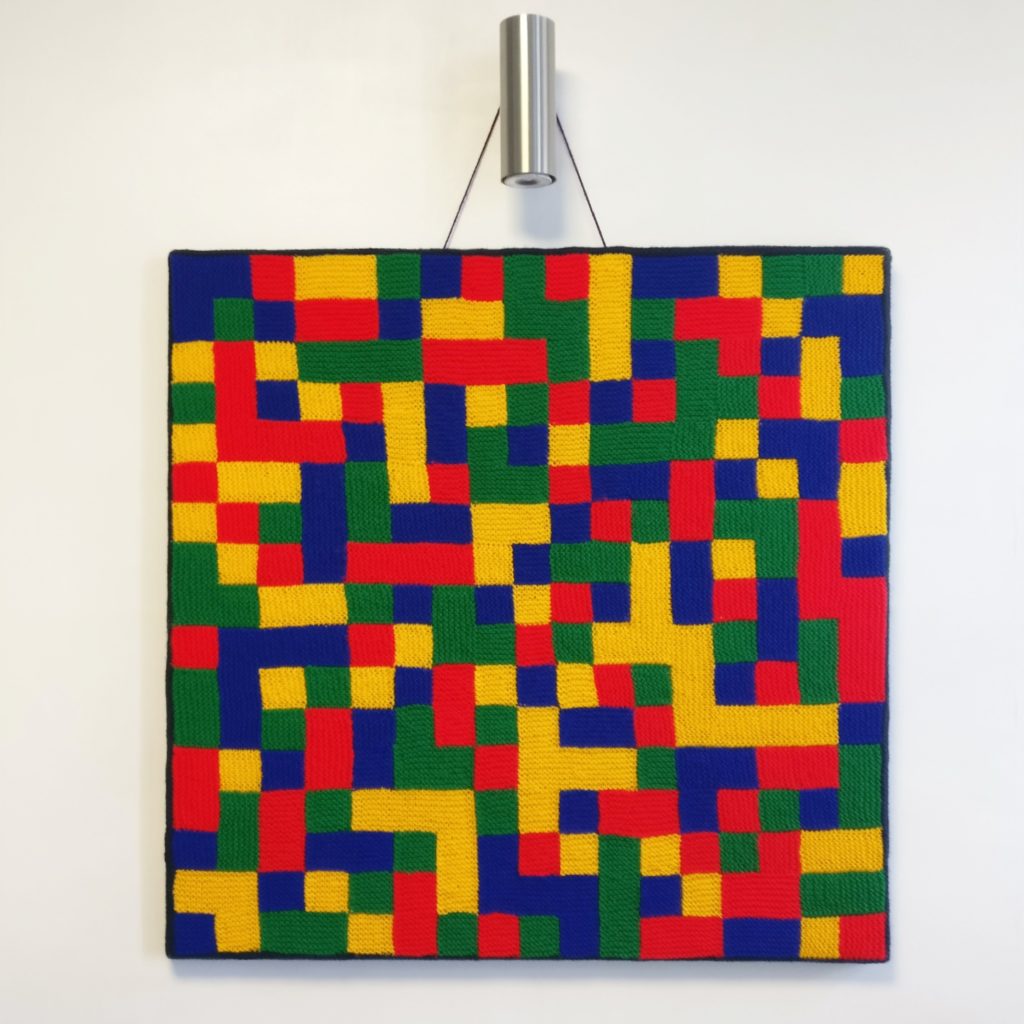I think you would have to look at this for a very long time to work out what is unusual about the arrangement of squares. Scroll to the bottom of this post if you want to know now

In July The Big Internet Math-Off 2019 took place. This was a semi-serious competition to find The World’s Most Interesting Mathematician 2019 (The rider from the organiser was ‘of the 16 people I contacted, who were available in July, and wanted to take part’.)
It was arranged in four groups where each contestant had to pitch against all the others in the various rounds. Group winners went on to semi-finals then the final. Those who reached the final made a total of five pitches. Quoting from the organiser on the Aperiodical website the idea was ‘to come up with maths topics they find interesting. I don’t need new things, or things that they came up with – just the kind of thing that you’d tell a fun maths friend about when you bump into them’.
The pitches were many and varied. One in particular caught my attention. It was from Sameer Shah in the final. Sameer talked about two squares. One was a greyscale portrait with 127 pixels in each direction. The other was the arrangement of 17 x 17 circles shown here.
My first reaction to the coloured picture was ‘I could knit that’. In reality knitted circles are quite tricky. Crochet circles are much easier but the problem with all circles is joining them together. They can only be joined at the places where they touch and that doesn’t make a very strong structure.

So it had to be squares. My first plan was to make it blanket size. I tried several types of crochet squares, settled on one and made 68. When I joined them together I didn’t like them and decided they had to be knitted. I tried various ways of making squares and strips, joining them together with a black edging – and didn’t like any of them.
I had originally thought the lines were important to convey the original mathematical idea then decided to go for an ‘arty’ approach instead.

I was still aiming to make a blanket-sized piece but it suddenly seemed unnecessary. The new method could use much smaller squares so it would be quicker to make and could be mounted to hang on the wall.

I started with the yellow square in the centre and worked my way outwards using a mixture of intarsia and log cabin techniques. The rows of squares got longer and longer until I was knitting 17 squares at once on the outermost edge. This would have been a very difficult job with 17 separate balls of yarn tangling together so I cut lengths of yarn long enough to make the individual squares and pulled the ends through the mass as soon as they started to get entangled.
The finished hanging measures approximately 71 cm (28”) square.
The theory for log cabin knitting is that you knit a block onto one edge then turn the work and add another (usually different) coloured block on to the next side. You keep turning the work and adding until it is the size you want. I did almost that but, for a bit of variety, I sometimes added two, or more, rows of squares before turning for the next side. I did not attempt to show separate squares where adjacent squares were the same colour. The idea of showing clearly defined individual squares had now gone. In the close-up photo you can see ridges of knitting going in different directions.
Later in the year the finished hanging will be going to Sameer in Brooklyn, after it has put in an appearance at MathsJam Annual Gathering.
What is it?
Look at any block of squares and you will never find a rectangle or square that has all four corners the same colour. It is also possible to find a solution for the 18 x 18 size.
Buy the pattern on Ravelry